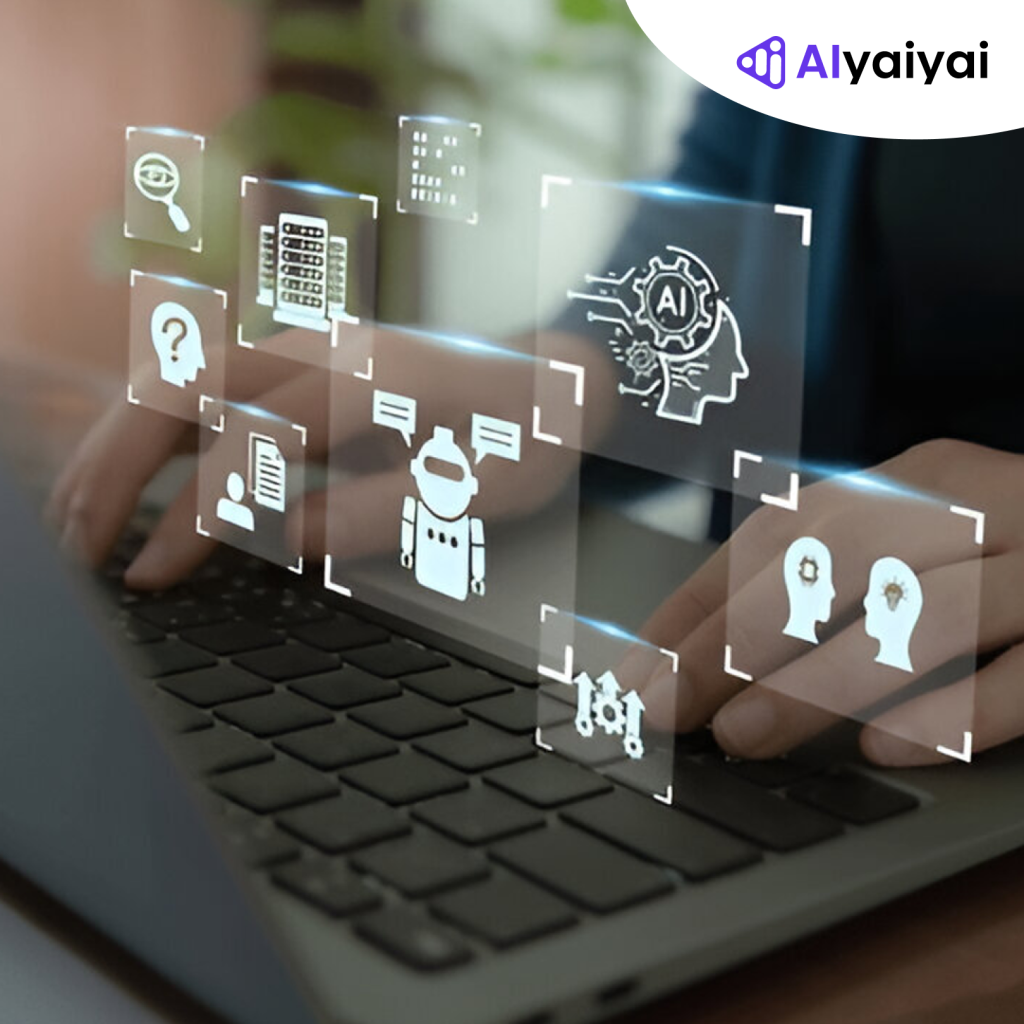RL or reinforcement learning is the subtopic of machine learning dealing with training agents to make sequential decisions after interacting with the environment. It can teach the agent via trial and error method to use feedback as penalties or rewards. Basically, this learning method imitates the ways animals and humans learn through experience to make RL an integral part of AI (artificial intelligence).
In this article, we are going to highlight all possible shades of RL letting you get familiar with the basics of this advanced learning method. Even, you can check the impact it has made on the industrial and marketing revolution on a bigger picture.
What are the key takeaways of RL?
When you are dealing with RL, remember these key points:
- Input- Input will be the primary state where the model will begin
- Output- Possible outputs can be many due to different solutions to the particular issue
- Training- Depends on the input and the model will give back the state where an agent can decide to punish or reward the model depending on the output acquired.
- This model keeps evolving and learning always.
- Based on the highest reward, you can decide the best solution.
What are the main concepts of RL?
- Agent- The decision-maker or the learner
- Environment- Agents need to interact with
- State- Specific situation of the agents
- Action- Possible moves that any agents can make
- Reward- Depending on the taken action, received feedback from the environment
How does RL work?
Using the trial and error method, the functions of RL depend on the principle of learning optimal behavior. As a result, agents take necessary actions in the environment to adjust the behavior, and receive penalties or rewards in order to positively impact the cumulative reward. This learning approach comprises the given elements:
- Policy- This is the strategy used by agents for determining the next course of action solely reliable on the present state.
- Reward function- This offers a scalable feedback signal depending on the current state and action needed.
- Value function- Operation estimating the expected cumulative reward from any mentioned state.
- Model of the environment- A unique representation of such an environment that assists in planning through the prediction of future rewards and states.
What are the types of RL?
Being vibrant and with an area of research, developers come up with a number of approaches to use this. However, 3 widely preferable methods are discussed in this section:
- Dynamic programming
This refers to breaking down large tasks into smaller bites modeling them as workflows. It will ensure sequential decisions can be made with discretion and each of them will result in possible next state.
This defines the reward of the agent for any assigned action will be defined as function of the action in present environmental state to unlock the potential next state. Such an approach is the part of policy governed by the actions of the agent. Optimal policy determination is the key component of dynamic programming for RL with the Bellman equation.
It denotes VT(s) the total reward expected during the starting time (t) till the end of the decision workflow. It considers that the agent starts the action at state (s) during time (t). It divides the reward in time (t) as immediate reward RT(s, a) – the reward formula along with the total expected reward.
So, the agent boosts the value function to receive the reward signal in every state by considering consistent action that gets rewarded. - Monte Carlo method
Dynamic programming is entirely based on the model of the environment perceived to receive rewards, detect patterns and navigate the environment. It always assumes a black-box environment making it model-free.
Dynamic programming looks for potential future actionable states and rewarding signals to make decisions, it is mainly based on experience as they sample the sequence of rewards, actions and states by interacting with the environment. It learns through trial and error method instead of probabilistic distributions.
There is a huge difference between dynamic programming and Monte Carlo when it comes to the value function determination. It receives the largest cumulative reward by selecting the rewarded actions consistently and in successive states.
In contrast, Monte Carlo gets average returns for every state-action pair. It clearly depicts that this one needs to wait till the completion of all actions in the planning stage prior to calculate the value function to update the policy. - Temporal difference learning
Popularly known as TD, it learns the combination of Monte Carlo and dynamic programming. So, TD continues to update the policy along with estimates for the future states on each step without any delay for final values.
Alike Monte Carlo, it learns by raw interactions with the environment over using the model. The agent revises the policy depending on the difference between actual and predicted rewards for every state.
That’s why Monte Carlo and dynamic programming received the reward but TD weighs the potential difference between the received and expected reward. Based on that, it updates the agents about the estimation for the next step without further delay or wait, unlike Monte Carlo.
TD comes with certain variations and 2 are prominent in them – Q-learning and SARSA (State-Action-Reward-State-Action). Q-learning is the offline policy that uses two subsets of policies – (a) exploration or behavior policy (generation of behavior) and (b) exploitation or target policy! On another flip, SARSA is the online policy evaluating consistently to attempt and improve the decision-governing policy. - Additional Methods
A gamut of other methods is available for RL. Dynamic is value-based choosing the actions depending on estimated values to increase the value function. On the other hand, policy gradient methods follow parameterized policy aiming to select the actions without value function consultation. But it is highly effective in high-dimensional environments.
Actor-critic methods make use of both policy-based and value-based RL. The actor is a so-called policy gradient looking for important actions to take while the critic is a value function for assessing the actions. This is basically a type of TD.
Specifically, it evaluates the value of action determined not only by the own reward but also the possible value of the following state adding more to the reward of the ongoing actions. The implementation nature of policy in decision-making and value function is the key advantage of this type making it less necessary for environmental interaction.
What are the features of RL?
- Goal-centered learning– Deals with maximizing cumulative rewards with time. It strictly adheres to the policies for attaining the specific goals effectively.
- Trial and error process– Exploring different actions for discovering optimal strategies. Balancing of exploitation (picking up actions with high rewards) and exploration (new actions) is maintained through experimentation.
- Feedback mechanism– Solely relies on penalties or rewards depending on the actions of the agents with consistent feedback for refining the decision-making procedure.
- Sequential decision-making– Serves as a pro to make decisions in scenarios having long-term consequences to account for potential rewards and task structure in the near future.
- Markov Decision Process (MDP)– Most of the issues are recognized as MDP as the reward, action, state, and transition probabilities of the environment redefine the learning experiences of the agent.
What are the methods to collect data by an agent to learn the policies?
2 methods are there to collect data by an agent for learning the RL policies. They are:
- Online– Collection of data takes place by direct interaction with the surrounding environment. Here, the agent receives processed and collective data by continuous interaction with the environment.
- Offline– If the agent lacks direct environmental access and still learns through logged data of the particular environment, it is called offline learning. A huge amount of data becomes an offline learning set often cause practical challenges to training models because of lack of direct environmental interaction.
What are the elements of RL?
The deep reinforcement learning problems are beyond the agent-environment goal and are often characterized by the following 4 elements:
- Policy– It defines the behavior of the RL agent through the mapping of determined environmental states for taking specific actions. It involves more computational processes or a kind of rudimentary function. For example, a policy is provided to the autonomous vehicle to stop the action with pedestrian detection.
- Reward signal– It refers to the goals of the RL’s issues. Every agent of RL receives either punishment or reward from the environment. Being the agent, it is essential to make the most of the cumulative rewards received from the system. This will alleviate the travel time for self-driving vehicles mitigating the risks of collisions by keeping on the proper lane without extreme acceleration or deceleration. This is the testament that RL accompanies several reward signals for guiding the agent.
- Value function– The value function has a big difference from the reward signal. While the former denotes long-term benefits, the latter is all about instant benefits. In this case, it refers to the desirability of the state per all states. For example, the autonomous vehicle can alleviate the travel time and drive on the sidewalk not exiting the lane with fast acceleration; but these can decline the overall functional value of the vehicle. So, the RL agent may need slightly more time to yield more reward in all 3 aspects.
- Model– It is the optional sub-component of the RL system. Models enable the prediction of environmental behavior by the agents for possible action. Then they use the predictions to determine the possible action courses proportionate to potential outcomes. For instance, the model guides the autonomous vehicle for predicting the best routes to reach a destination, and what can be expected from the surrounding vehicles considering their speed and position. Some approaches also make use of direct human feedback for initial learning and then turn to autonomous learning.
What are the benefits of Reinforcement Learning?
- Autonomous learning– It promotes independent learning without the need of labeled data or explicit supervision to make it viable for dynamic and complex environments.
- Adaptability– Agents are made to adaptable to volatile environments ensuring flexibility and robustness in real-world applications like autonomous systems and robotics.
- Optimal decision-making– With emphasize on long-term rewards, RL becomes finesse in the issues deemed for sequential decision-making and strategic planning.
- Scalability– It scales the complex environments mainly when it fuses with deep learning allowing the agents to deal with action and high-dimensional state spaces.
- Real-time learning– Interaction with the real-time environment makes the RL agents learn to enable applications in specific fields like autonomous vehicles and gaming.
What are the challenges still RL needs to face?
While deep reinforcement learning possesses immense potential, some challenges are there with it as well. We mentioned them here for your reference:
- Data efficiency– Extensive environmental interactions are required for RL and it is time-consuming as well as very resource-intensive.
- Exploitation vs. exploration– It’s a real challenge to retain the perfect balance between the exploitation of rewarding action and exploration of new action.
- Safety in real-world applications– Sometimes, agents of RL make unsafe actions mostly during training times in physical systems such as autonomous vehicles or robotics.
- Sparse rewards– An infrequent rewarding system within the environment can affect learning and needs proper techniques to augment and reshape the reward signals.
Besides these challenges, deep learning advancements, simulation of the tools and transfer learning with RL’s adoption to acceleration will aim to make it sample-effective, safe and interpretable for real-world deployment.
What are the real-world applications of RL?
RL makes it applicability in numerous domains, including:
- Autonomous vehicles– Self-driving cars learn optimal driving strategies like traffic management, obstacle avoidance and lane changing for RL through interaction or simulation of real-world environments.
- Gaming– AI agents outperform humans in games and RL is responsible for revolutionizing that. Some perfect examples are Dota 2, Go and Chess and others.
- Robotics– The implementation of RL makes certain tasks such as industrial automation, navigation and grabbing objects easy. Robots learn to adapt to different conditions and acquire motor skills for precision and efficiency.
- Healthcare– The application of RL is prominent in treatment planning, drug discovery and medicine for developing diagnostic strategies, predicting disease progression and optimizing dosages effectively.
- Finance– It incorporates the financial institutions for optimized credit risk management, portfolio management and trading strategies by learning the latest market trends to make informed decisions in dynamic markets.
- Energy management– Optimization is precise in renewable energy storage, energy consumption in developments and power grid operations to keep up with the balance of demand and supply efficiently through RL.
- Industrial process– The role of RL is immense in the manufacturing industry for supply chain management, process optimization and predictive maintenance to boost productivity by alleviating operational costs.
- Natural Language Processing (NLP)– It improves text summarization, language translation and chatbots to refine the language models through interaction and feedback.
- Space exploration– RL encourages autonomous decision-making space missions to help the robots explore non-familiar terrains and optimize resource usage in remote settings and environments.
Conclusion
Reinforcement learning, therefore, is a groundbreaking approach to machine-intelligent decision-making with the help of feedback and interaction. RL is regarded as modern AI’s cornerstone due to its impeccable features such as sequential decision-making, adaptability, and goal-centred learning. The diverse applications starting from robotics to healthcare and to gaming it exhibits a revolutionary impact in different industries.
Although it still possesses multiple challenges yet the harmonious bond between advanced computing power and RL with deep reinforcement learning technologies strives for an intelligent future promoting efficiency, innovation, and automation in multiple unknown ways.
FAQs
1. What is the role of exploitation and exploration in RL?
Exploitation utilizes the actions known for yielding highest rewards whereas exploration is all about discovering the impact of new actions. Balance is really important between these two as over-exploitation can resist the discovery of better strategies and excessive exploration leads to inefficiency.
2. What is the difference between supervised learning and RL?
There will be a trained model on the labeled data for predicting outputs for the given inputs in supervised learning. But RL lacks labeled data and it has agent to get the breakthrough using trial and error method to explore the environment and seek feedback. RL is primarily focused on sequential decision-making to optimize long-term rewards. But supervised learning thrives to minimize the error in prediction.
3. What are the algorithms of RL?
Some widely preferable RL algorithms are:
- Q-Learning– Value-based and model-free algorithm
- Deep Q-Networks (DQN)– Combination of deep neural networks with Q-learning
- Policy Gradient Methods– Direct optimization of policies
- Actor-Critic Methods– Combination of policy-based and value-based approaches
4. How can RL manage consistent action spaces?
Discrete and conventional RL methods such as Q-Learning are not effective in consistent action spaces. Meticulously designed algorithms such as PPO (Proximal Policy Optimization and DDPG (Deep Deterministic Policy Gradient) are viable for consistent action environments ensuring smooth decision-making.
5. What are the key considerations in RL applications?
RL is meticulously designed for avoiding unprecedented consequences including loopholes exploitation in the reward mechanisms and taking any drastic and unsafe decisions at the time of training. Safe testing and transparency is the key mainly for sensitive spots such as autonomous vehicles and healthcare.
Got an AI idea or challenge in mind? Head over to our AI Consulting Solution — let’s help you build something smart.


